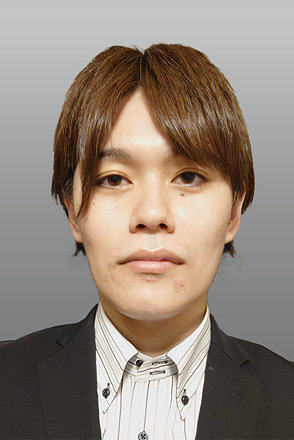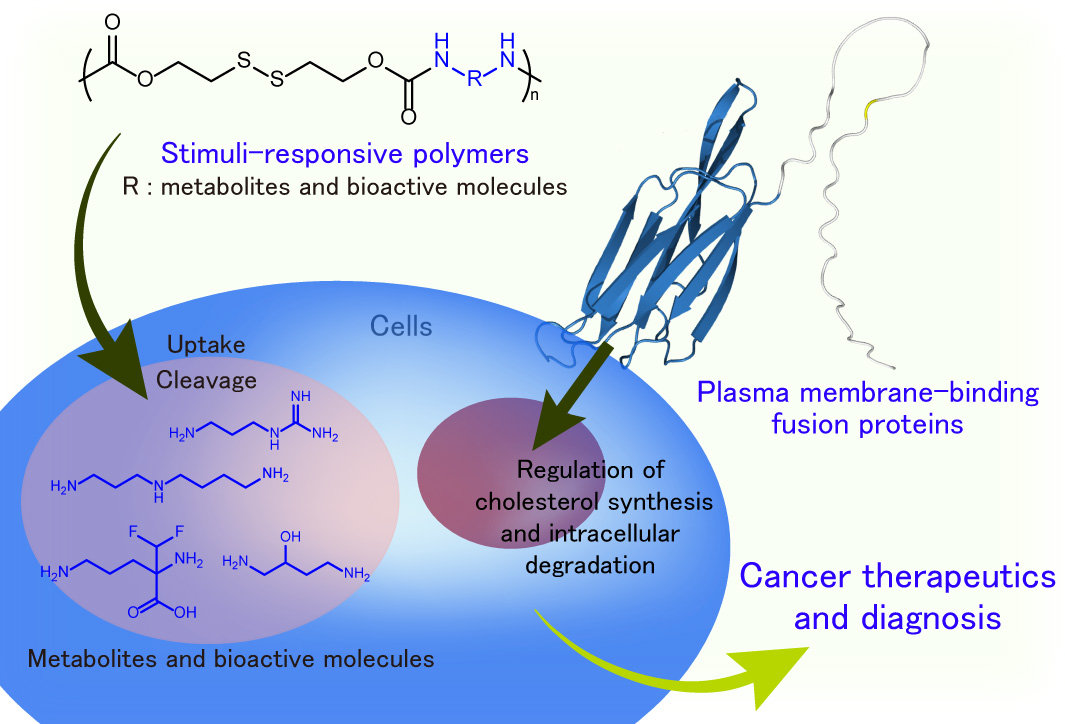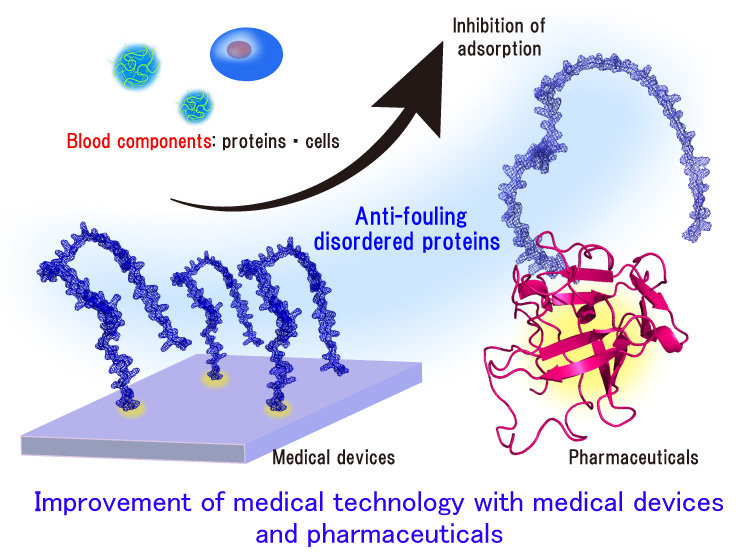
Medical contributions with next-generation biomedical materials
Laboratory on Biomedical Materials
Senior Lecturer:NISHIDA Kei
E-mail:
[Research areas]
Biomaterials, polymer science, protein engineering, nanomedicine
[Keywords]
Medical polymer, Bio-interface, plasma membrane, stimuli-responsivity. intracellular degradation
Skills and background we are looking for in prospective students
No knowledge or ability in a specific field is required. Ambition to explore new technologies are most important. Medical materials research, including polymer chemistry, protein engineering, molecular biology, pharmacology, and informatics, will be proceeded according to the student's background.
What you can expect to learn in this laboratory
Students will work on the development of medical materials and methods for diagnosis and treatment of diseases using synthetic polymers, proteins and cells as materials. Depending on the student's interests and background, you can select basement medical materials such as organic synthesis, genetic engineering, and biology. In addition to acquiring a high level of academic knowledge and skills in materials science and life science, students will also develop a broad perspective and wisdom that will enable them to be active anywhere as the scientist.
【Job category of graduates】 Materials, pharmaceutical, and medical device
Research outline
We design next-generation medical materials for developing the treatments and diagnostic methods for cancer and other diseases, and clarifying the interaction between living organisms and medical materials. The medical materials are developed via organic synthesis, protein engineering, and cell engineering.
1) Stimuli-responsive polymers that improve cellular metabolism

Fig. 1 Medical polymers such as Stimuli-responsive polymers and fusion proteins

Fig. 2 Disordered proteins with anti-fouling properties
Cancerous and aged cells have drastically altered metabolic functions compared to normal cells. We investigate the disease treatment by improving metabolism by delivering metabolites and bioactive molecules to cells. In this regard, we design stimuli-responsive synthetic polymers synthesized with metabolites and other materials, that degraded and released metabolites in response to specific intracellular environments (Fig. 1).
2) Cancer treatment and diagnosis focusing on cell membrane constituent molecules
We develop cancer therapies and diagnostic methods by focusing on the plasma membrane components of cancer cells. In particular, cholesterol and glycan in plasma membrane are focused. For example, we have designed fusion proteins that interact with cholesterol in plasma membrane (Fig. 1). The proteins induced apoptosis into cancer cells via regulating the cholesterol synthesis and intracellular degradation such as autophagy.
3) Design of disordered proteins with anti-fouling properties
Medical devices and pharmaceuticals used inside the body, such as blood collection tubes and syringes to artificial heart lungs, artificial organs, and biopharmaceuticals, are essential for medical technology. Their surfaces require anti-fouling properties that inhibit protein adsorption to suppress blood coagulation, foreign body recognition, and immune responses. The modification of antifouling materials on medical devises and pharmaceuticals is essential approach. We develop novel anti-fouling materials composed of disordered proteins which are designed via computational science and AI (Fig. 2).
Key publications
- Kei Nishida, et al, Cholesterol- and ssDNA-binding fusion protein-mediated DNA tethering on the plasma membrane, Biomaterials. Science, 13, 299-309 (2025)
- Kei Nishida, et al., Sensitive detection of tumor cells using protein nanoparticles with multiple display of DNA aptamers and bioluminescent reporters, ACS Biomaterials Science and Engineering., 9, 5260–5269 (2023)
- Kei Nishida, et al., Selective Accumulation To Tumor Cells With Coacervate Droplets Formed From Water-Insoluble Acrylate Polymer, Biomacromolecules, 23, 1569–1580 (2022).
Equipment
NMR, high performance liquid chromatograph, quartz crystal microbalance, contact angle meter, flow cytometer, confocal laser microscope
Teaching policy
Research on medical materials requires knowledge and skills in a variety of fields of study. We set up independent research themes for each student and guide them to pursue their own research with attachment and interest, while teaching them basic knowledge and techniques. In addition, we support students in acquiring the scientific thinking, writing, and expressive skills that are important for science-related human resources. We welcome you.
[Website] URL : https://miyakoeijiro.wixsite.com/eijiro-miyako-lab